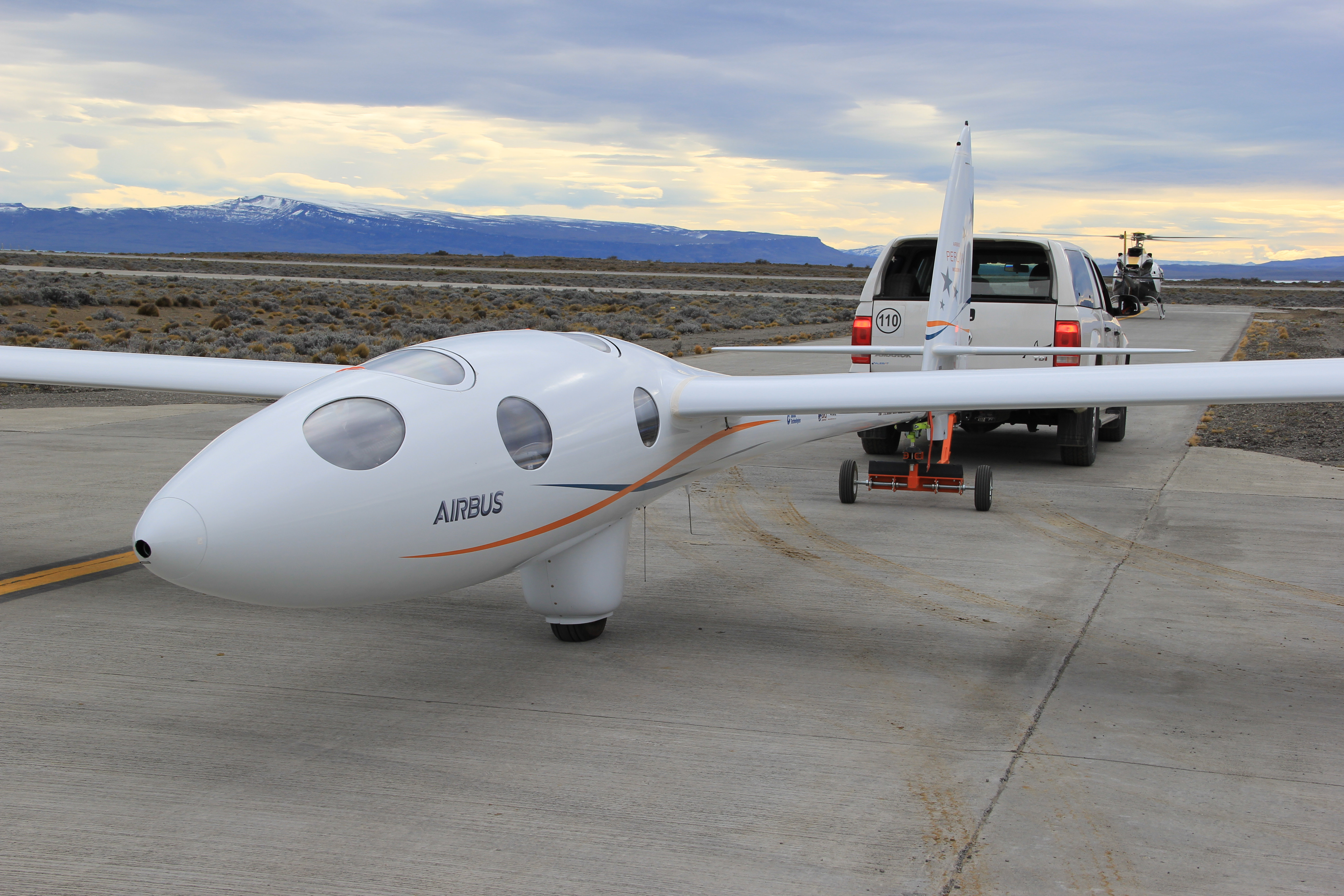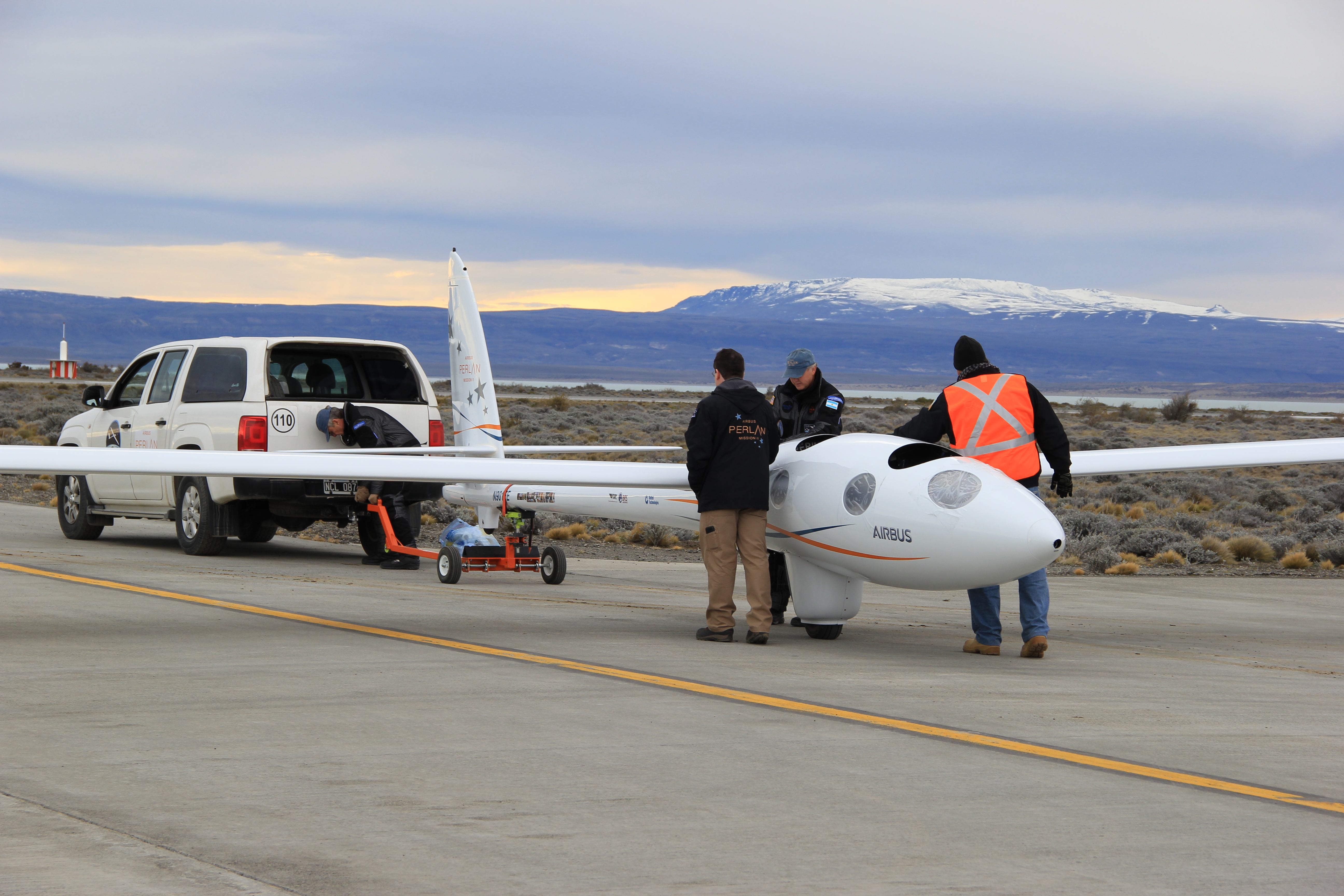Perlan II pilot Jim Payne plans to soar to 91,000ft in his Airbus-sponsored unpowered glider – but that was not the objective of a quick, 1h flight on 30 August in El Calafate, a rugged tourist destination in southern Argentina. Payne’s team had made several modifications to the Perlan II’s control system, and this flight simply verified that they worked.
The shake-out flight was well-timed. The rare combination of two meteorological phenomena – tidal wave-like wind currents flowing eastward over the Andes and a high-altitude jetstream spilling northward from Antartica – aren’t forecasted to unite over Patagonia for several more days. When those two stratospheric forces collide, it will give Payne’s team their best chance this year to break the soaring altitude record of 50,700ft set by the Perlan I in 2006.
“Around the 6th [of September] is looking good,” says Payne, the chief pilot for the Perlan II, which is funded by $7 million contributed by several donors, with the majority provided by Airbus.
The role of Perlan II’s chief benefactor goes beyond financial support. Payne’s flight on 30 August in El Calafate drew an audience of dozens, including Paul Eremenko, Airbus’s chief technology officer, and a number of international journalists.

James Darcy/FlightGlobal
The mission of Perlan II has few obvious benefits for a large aircraft manufacturer. To be sure, the Perlan II could spend significant time investigating turbulence-inducing mountain wave conditions above 50,000ft – an altitude that could rise in significance as manufacturers seek to avoid increasing congestion below 41,000ft. If the Perlan II successfully rises to 90,000ft, the pilots will encounter atmospheric conditions similar to those on the surface of Mars, which could generate aerodynamic data that informs the way Airbus designs future aircraft to explore the Red Planet.
But the Perlan II also symbolises Airbus’ recent philosophical break from industry tradition in research and technology programmes. With the appointment last year of Eremenko – a former Google executive and manager at the Defense Advanced Research Projects Agency – as CTO, Airbus has moved to a new strategy.
Rather than pushing discrete technologies steadily through a series of technology readiness levels (TRLs) from prototype to production, Airbus is now bundling multiple innovations onto a new series of flying demonstrators.
“Let’s develop what could be a minimum viable product. Let’s fly it,” says Eremenko, speaking in El Calafate.
The industry’s time-tested TRL process still works for shepherding aerostructures and engines from development to production, but is less suited for advancing new technologies with shorter lifespans, such as software applications and electronics, Eremenko says.
“Electrical and software timescales are different. I think they lend themselves more to this kind of iterative process,” he adds.

Stephen Trimble/FlightGlobal
This approach has spawned a new Airbus technology roadmap, which Eremenko outlined in June. The plan includes many projects launched by Eremenko’s predecessors, but also features new experimental X-planes, such as Project Vahana, which will test new advances in electric propulsion, distributed propulsion and autonomous flight control.
“Perlan is obviously not a part of that, but the spirit is similar, where it’s much more open to the outside world,” Eremenko says.
“So we want to find the adventurous spirits who are passionate about a particular technology. It might not be trying to soar to the edge of space. It might be demonstrating electric technology or autonomous technology or something else.”
The Perlan II was conceived by aviation adventurers such as the late Steve Fossett and Einar Enevoldsen, who piloted the original Perlan glider (a modified Glaser-Dirks DG-500) to set the current soaring altitude record 11 years ago near El Calafate.
After Fossett’s death the following year, the project struggled to obtain the funds necessary to design a glider that could soar even higher into the stratospheric winds. Finally, Airbus chief executive Tom Enders agreed to support the project in 2014, allowing the Perlan II to travel to El Calafate in 2016 for the first time.
Unfortunately, this attempt to break the altitude record began just as Patagonia experienced a two-year low in occurrences of the Polar Night Jet, the jetstream-like wind current created by Antartica’s Polar Vortex. The Perlan II needs to seek out the Polar Night Jet to fly beyond the effect created by the Andes mountain wave, which can only lift the glider to about 50,000-60,000ft.
But Payne’s team of volunteers will be ready if the Polar Night Jet returns over Patagonia as expected in early September. And the team will not give up if the winter season ends a few weeks later without a record-breaking flight. They can try again in the Sierra Nevadas in the Northern Hemisphere’s winter season, or perhaps return again to El Calafate next year.

Stephen Trimble/FlightGlobal
Source: FlightGlobal.com


























